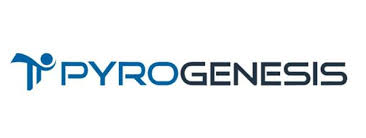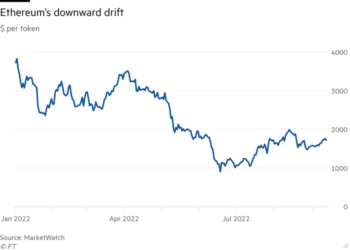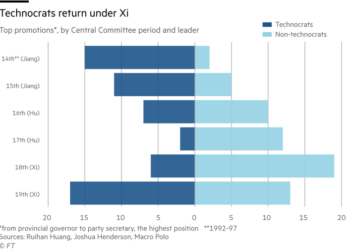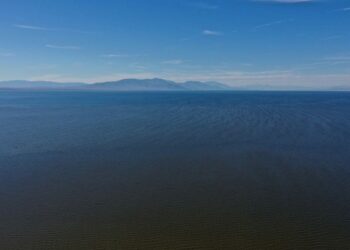MONTREAL, QUEBEC–(Marketwired – Aug. 14, 2017) – PyroGenesis Additive, a division of PyroGenesis Canada Inc. (https://pyrogenesis.com) (TSX VENTURE:PYR) (OTCQB:PYRNF), a high-tech company (the “Company” or “PyroGenesis”) that designs, develops, manufactures and commercializes plasma waste-to-energy systems and plasma torch products, is pleased to announce today that it has developed a new plasma-based process to produce metal powders which, not only enables MIM cut powder production at higher volumes, but may have a greater impact on the market than the Company’s original Plasma Atomization technology. Furthermore, the Company announces that the previously announced ramp-up phase for its first powder production system remains on schedule.
The Company provides the following highlights and developments to date:
- On October 26, 2015, PyroGenesis announced that it was re-entering the market to produce metal powders, specifically for Additive Manufacturing (3D printing);
- On April 7, 2016, PyroGenesis announced its intention to spin-off its Additive Manufacturing capabilities into an independent public entity;
- On April 27, 2016, PyroGenesis announced that its 3D Printing particle size distribution greatly exceeded expectations;
- On October 25, 2016, PyroGenesis announced that it had filed a patent for an improved metal powder production process and that the Company was on schedule for a 2017-Q1 powder production system assembly and first production run;
- On January 23, 2017 and March 14, 2017, PyroGenesis provided updates on 3D Printing and reaffirms that it is on schedule for 2017-Q1 assembly and first production run despite delays with suppliers;
- On March 30, 2017, PyroGenesis announced that it had completed the assembly of its first powder production system, with its first powder run exceeding expectations, and that the ramp-up, which was already underway, was expected to take place linearly over approximately four (4) months;
- On April 25, 2017, PyroGenesis announced receipt of its first powder order from a multinational conglomerate, with the down payment already received, and market interest exceeding expectations;
- On June 7, 2017, PyroGenesis announced receipt of its second powder order;
- On June 14, 2017, PyroGenesis announced creation of PyroGenesis Additive; and
- On June 19, 2017, PyroGenesis announced receipt of its third powder order and successful delivery of its first order which included both Titanium and Inconel powders;
Mr. P. Peter Pascali, President and CEO of PyroGenesis, provides an overview of today’s announcement in the following Q&A format:
Q. What exactly is a “MIM cut”?
A. MIM technically is short for “Metal Injection Molding”. The MIM cut refers to a particularly small metal powder size typically used in metal injection molding, and is now becoming of interest to certain 3D metal printer manufacturers. The metal powder sizes we deal with are measured in microns, with the MIM cut typically being between 5-20 microns, and sometimes as high as 25 microns.
Q. Is PyroGenesis not the inventor of the Plasma Atomization technology? A technology that makes small, metal powders for 3D metal printers, and which in fact, has become the gold standard for the production of titanium powders for the industry?
A. Yes, that is correct. We are the inventors of the Plasma Atomization technology. A technology we use to produce very small, uniform, fully dense and spherical metal powders that flow like water, and which are highly sought after in the additive manufacturing (“AM”) Industry. We first began producing powders using our Plasma Atomization technology for the biomedical industry between 2001-2004. In 2015, PyroGenesis invested approximately $2MM in improving both the production rate and particle size distribution, which led not only to a patent pending, but also to PyroGenesis’ decision to re-enter the market and produce powders for the AM Industry.
Q. Could you describe the MIM cut in relation to 3D printers and the Plasma Atomization technology’s capabilities?
A. This is a very broad subject but I will try to give a brief overview recognizing the limitations of this forum.
Basically, there are now three (3) broad types of 3D printers using metal powders.
The first (1st) type is electron bean melting (EBM), used, for example, by Arcam printers, now part of GE Additive. EBM manufactures parts by melting metal powder layer by layer with an electron beam in a high vacuum. EBM technology uses the larger/coarsest fraction produced by our Plasma Atomization technology; typically, in the 45-106-micron range.
The second (2nd) type is Laser sintering, used, for example, in EOS, SLM, and Concept Laser printers. These printers use the small to middle fraction produced by our Plasma Atomization technology; typically, in the 15-45-micron range. Most metal printers use this small/middle fraction.
The third (3rd) type is an inkjet type technology, used, for example, by Desktop Metals, and whereby the powders are coated with a binder to “glue” the powders together. These printers require ultra-fine powder, smaller than the powder required for Laser sintering machines, and a size cut that, until recently, PyroGenesis was not focusing on. There are some printers that use inkjet type technology but only need coarser powders, but we are not reviewing these printers here.
Q. Ok, so PyroGenesis’ Plasma Atomization technology is good at addressing the powder needs of the first two (2) types of metal printers, i.e. EBM and Laser sintering, which combined use a powder size of between 15-106 microns; however, what about the third (3rd) type, the inkjet type technology, that uses the ultra fine, or MIM cut requiring a powder size of between 5-25 microns? What is PyroGenesis doing to address this new market?
A. That is a very good question and one that investors have been asking us as of late, and is, in fact, the essence of our announcement today.
PyroGenesis’ Plasma Atomization technology already produces powders for EBM and Laser Sintering in optimal quality and quantities. To the best of our knowledge, only plasma technology can produce the high-quality powders required for these printers.
Ironically, until the interest by 3D inkjet type metal printers in smaller powder sizes, the MIM cut was considered an undesirable by-product of the Plasma Atomization technology, with most of the economic value residing in the other two cuts encompassing the 15-106 powder size distribution.
In fact, several months ago, the Company was approached by a number of companies who were interested in MIM cut titanium powder and whereby it became apparent to us that the appetite for this ultra-fine powder was significant. As a result, we decided to pause our ramp-up phase to make adjustments to our Plasma Atomization technology in order to try and shift the particle size distribution towards this low end of the spectrum, and produce powders in the range required for such “inkjet” type 3D printing machines.
Q. …and were you successful?
A. Beyond our expectations. We were able to develop this new plasma-based process being announced today which in essence has given us significant control over the powder sizes produced, at significantly higher production rates, at less cost. We can now make MIM cut powders in very large quantities with little to no waste; thereby growing with, and enabling, those requiring ultra-fine powder, and meeting their strategic growth needs.
We believe this breakthrough is, if not more significant, then at least as significant as our original Plasma Atomization technology, and is just the beginning of what we can do with this new plasma-based technology.
Q. What exactly do you mean by this?
A. It seems that we have not reached the limit of this new plasma-based process. By that I mean that once we achieved our goals (i.e. MIM cut, increased production rates), we backed off in favour of continuing with the ramp-up phase. Given our plasma expertise and our familiarity with the technology, we believe we have not even scraped the surface of what this new process can do with respect to production rates and powder quality.
Q. The bottom line is: have you produced MIM cut or is this all theory and conjecture? Plus, can you give us some indication of what production rates and powder quality you are talking about?
A. We most definitely have recently produced MIM cut titanium powder Grade 5. Grade 5 is the grade currently being requested by the third (3rd) type of inkjet printers mentioned above. Of interest is that not only can we make Grade 5 but it seems, though not yet confirmed, that we can also potentially make Grade 23 in the MIM cut. Grade 23 is the highest-grade titanium powder and, to the best of our knowledge, we know of no other powder producer that can make MIM cut titanium Grade 23, let alone in commercial quantities.
With respect to production rates, we consider that to be confidential information, however, suffice it to say that, we have not read anywhere, (i.e. web sites, articles, recent or otherwise) of any other plasma powder producer whose production rates or powder quality exceeds our capabilities. To the best of our knowledge, there is no single plasma-based powder producer that can produce powder in sufficient quality and quantity to serve the whole market, including the ultra-fine powders (or MIM cut) used by inkjet type printers.
Q. How has all this affected the ramp-up schedule, and if any, what challenges?
A. Interestingly enough, we made all these discoveries/improvements while staying true to the ramp-up schedule, that is to say, ramp-up is still scheduled for completion between the end of this coming September and beginning of October. In fact, we are actually slightly ahead of schedule right now, with production rates continuing to exceed our expectations.
The main challenge right now is how to incorporate the current advances announced today within our current platform, while still maintaining our ramp-up commitment and schedule. The beauty of these discoveries/improvements is that they can be incorporated into our existing platform with little to no increase in capital cost; in fact, ultimately, we expect a decrease in both capital and operating costs as a result. Our current strategy is to maintain the ramp-up schedule while integrating these improvements, as time permits, however, at this stage, it is too early for us to determine whether all these improvements will be fully incorporated by the end of the ramp-up phase.
Apart from that, we are experiencing the regular challenges that come with a ramp-up phase, but nothing that hasn’t been solved or isn’t manageable. All in all, we are more than happy with the progress to date.
Q. One last question. How can you make all these improvements, test different metals, and still be on track for ramp-up?
A. That’s a very good question and one that’s difficult to answer as it’s very difficult to convey in writing the buzz that has engulfed PyroGenesis as of late; not just within our powder production business but also within our other lines as well (Drosrite™, chemical warfare agent destruction, the US Navy, just to name a few), and it is within this energized context that the answer lies.
What is the expression? If you want something done give it to a busy man? Well that applies 10-fold at PyroGenesis these days. We are plasma experts and we have built a team of unique individuals who are passionate about their work and challenges and don’t turn off at 5pm. They are constantly thinking about solutions and improvements be it in the shower or on their drive back and forth to work. It is this truly unique team that that has enabled us to successfully introduce plasma-based solutions across a myriad of industries.
To put this answer in the context of our ramp-up, one has to understand that the ramp-up phase does not take the system down for the full 24-hour day and it is the prudent allocation of these extra time slots for other activities that allows us to maintain the ramp-up schedule.
Q. Conclusion?
A. We are currently in the 17th week of our ramp-up phase and not only are we on schedule but we have during this period (i) produced other metal powders besides titanium (see our press release dated June 19, 2017), and most importantly (ii) have developed a new plasma-based process to produce metal powders which very well may be as game changing as our original Plasma Atomization technology.
We are plasma experts, we are the inventors of the plasma atomization technology, and we are back as a powder producer. Our goal is to enable AM (i.e. 3D printing) to reach new heights while at the same time address the current powder needs of the industry.
Additionally, the Company announces today that CAN$130,500 of warrants have been exercised. “Once again, this exercise of warrants is timely,” said P. Peter Pascali, President and CEO of PyroGenesis. “As we noted in an earlier press release, we are currently looking beyond the ramp-up phase towards increasing production capacity ahead of our original expectations. This exercise of warrants, together with any future exercise of warrants and options, will enable us to implement plans to accelerate our original schedule to increase our production capacity of metal powders for the Additive manufacturing (3D Printing) Industry. We are still looking at ways to have up to three (3) additional powder production systems operating in 2018. To date, our metal powder production strategy is progressing far better than planned, and we are very pleased.”
About PyroGenesis Canada Inc.
PyroGenesis Canada Inc. is the world leader in the design, development, manufacture and commercialization of advanced plasma processes. We provide engineering and manufacturing expertise, cutting-edge contract research, as well as turnkey process equipment packages to the defense, metallurgical, mining, advanced materials (including 3D printing), oil & gas, and environmental industries. With a team of experienced engineers, scientists and technicians working out of our Montreal office and our 3,800 m2 manufacturing facility, PyroGenesis maintains its competitive advantage by remaining at the forefront of technology development and commercialization. Our core competencies allow PyroGenesis to lead the way in providing innovative plasma torches, plasma waste processes, high-temperature metallurgical processes, and engineering services to the global marketplace. Our operations are ISO 9001:2008 certified, and have been ISO certified since 1997. PyroGenesis is a publicly-traded Canadian company on the TSX Venture Exchange (Ticker Symbol: PYR) and on the OTCQB Marketplace (Ticker Symbol: PYRNF). For more information, please visit www.pyrogenesis.com.
This press release contains certain forward-looking statements, including, without limitation, statements containing the words “may”, “plan”, “will”, “estimate”, “continue”, “anticipate”, “intend”, “expect”, “in the process” and other similar expressions which constitute “forward-looking information” within the meaning of applicable securities laws. Forward-looking statements reflect the Company’s current expectation and assumptions, and are subject to a number of risks and uncertainties that could cause actual results to differ materially from those anticipated. These forward-looking statements involve risks and uncertainties including, but not limited to, our expectations regarding the acceptance of our products by the market, our strategy to develop new products and enhance the capabilities of existing products, our strategy with respect to research and development, the impact of competitive products and pricing, new product development, and uncertainties related to the regulatory approval process. Such statements reflect the current views of the Company with respect to future events and are subject to certain risks and uncertainties and other risks detailed from time-to-time in the Company’s ongoing filings with the securities regulatory authorities, which filings can be found at www.sedar.com, or at www.otcmarkets.com. Actual results, events, and performance may differ materially. Readers are cautioned not to place undue reliance on these forward-looking statements. The Company undertakes no obligation to publicly update or revise any forward-looking statements either as a result of new information, future events or otherwise, except as required by applicable securities laws.
Neither the TSX Venture Exchange, its Regulation Services Provider (as that term is defined in the policies of the TSX Venture Exchange) nor the OTC Markets Group Inc. accepts responsibility for the adequacy or accuracy of this press release.
SOURCE PyroGenesis Canada Inc.










